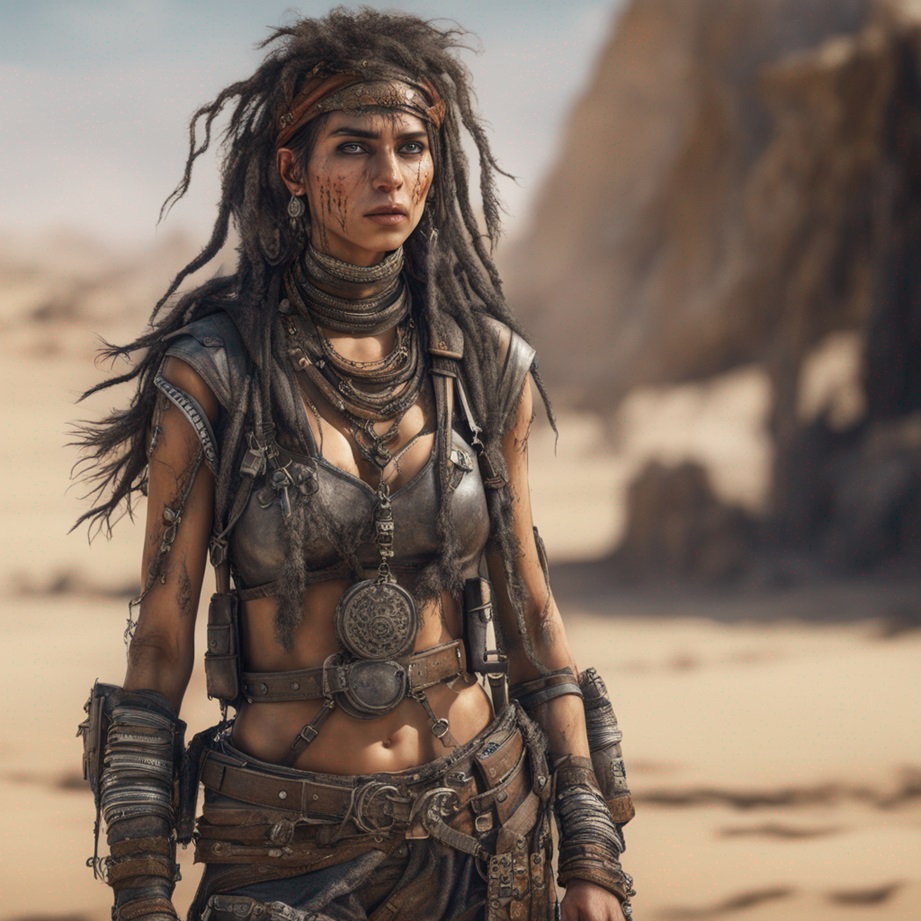The Battle Maidens of the Sands are a legendary group of fierce warriors known for their strength, speed, and mastery of combat. They are said to be guardians of the desert, defending the innocent and punishing those who seek to cause harm.
Their attire is a mixture of practicality and tradition - flowing robes and scarves to protect them from the harsh desert winds, and light armor to provide both protection and ease of movement. Their faces are often partially covered, revealing only their piercing eyes, which radiate determination and strength.
Their knowledge of the desert terrain is unparalleled, allowing them to navigate the treacherous dunes with ease. They can disappear in the vastness of the desert, making them elusive and difficult to track.
However, they are not just warriors; they are also skilled healers and guardians of their people. They possess an intimate understanding of the desert's secrets, including its unique flora and fauna, and its hidden oases.
Legends tell of their feats of bravery and heroism, from defending caravans from bandit attacks to facing off against powerful sorcerers and monstrous creatures. Their courage and unwavering loyalty to their people have earned them admiration and respect throughout the desert lands.
The Battle Maidens of the Sands are a force to be reckoned with, embodying the spirit and resilience of the desert itself. Their skills, bravery, and unwavering determination make them both fearsome adversaries and inspiring allies.
Please visit my other blogs: Art Collector, Mythology, Marine Art, Portrait of a Lady, The Orientalist, Art of the Nude and The Canals of Venice, Middle East Artists, 365 Saints, 365 Days,
and Biblical Icons,
also visit my Boards on Pinterest and deviantart
Images are copyright of their respective owners, assignees or others.
Some Images may be subject to copyright
I don't own any of these images - credit is always given when due unless
it is unknown to me. if I post your images without your permission, please tell
me.
Ads are shown only to compensate the hosting expenses.
If you enjoyed this post, please share with friends and family.
Thank you for visiting my blog and also for liking its posts and pages.
Please note that the content of this post primarily consists of articles
available from Wikipedia or other free sources online.





